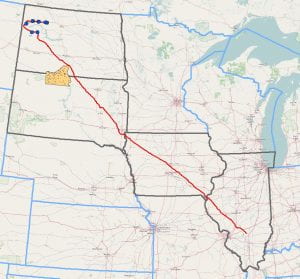The Use of Native American Stereotypes
Racism is an issue that still affects native people. It is extremely prevalent in the media of the United States, yet there is not a lot of change happening for the better. The most prominent examples of this is the professional football team, the Washington Redskins. This team, in one of the most visible sports leagues in the world and one of the largest media markets in the country, makes use of a racist name and stereotypical depiction of an indigenous person as its logo. This team, and many others with similar names/mascots, continue to profit of racist depictions of one of the most marginalized groups of people in the country. There are still many people who support the use of the teams’ names, with their main argument being that the names are tradition, but that is not an excuse for racism. A large amount of indigenous people find the use of the derogatory term to be offensive. The word is not the only problem, as many team logos are offensive, like the Cleveland Indians, or fans of teams will engage in chants that are stereotypical of Native Americans, like the “tomahawk chop,” used by fans of Florida State University, the Kansas City Chiefs, and the Atlanta Braves.
Read the full story here.
The Treatment of Native Properties in the Modern Era
After the different tribes of Native Americans were forced to leave their homeland, laws continued to change around the land they were occupying, because white settlers began to move west, into the land that the tribes were forced into. As a result of some of the laws passed, Reservations were created. These are pieces of land managed by the respective tribe and the United States Bureau of Indian Affairs, instead of the state government. The people living on these reservations have dealt with many hardships because of the unusual status of being run by the federal government. A recent example of one of these hardships is the Dakota Access Pipeline, which is a proposed oil pipeline that would need to go through Native American land in the Dakotas. Native Americans united to protest against the building of the pipeline, due to fear that it would contaminate the local water supply. The government, along with those building the pipeline say that they will respect the land of these tribes, but that has also been said many times in the past, resulting in the government taking advantage of indigenous people.
Read the full story here.
Contemporary Relations Between the Federal Government and Tribes
Representation is an important issue for indigenous people. Every ten years, the United States government does a census of the population, in order to figure out how to divide spending and to see the makeup of the country. There has been a consistent undercounting of indigenous people in the censuses of the past. The results of being undercounted means that there will be less money sent their way in the form of upkeep, like road maintenance. Many indigenous people live in areas that the government says are hard to count, due to them being very rural. As a result of the government not being able to count them, then the areas they live in may worsen, due to lack of repair through government programs. Ultimately, Native Americans need to be counted in the census, in order for them to receive all of the benefits that others will.
Read the full story here.
When I Became a Ghost’s Homepage
Connor Keefe 2020





